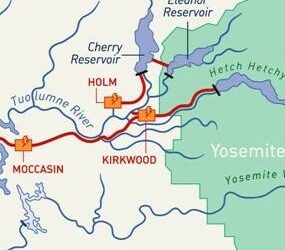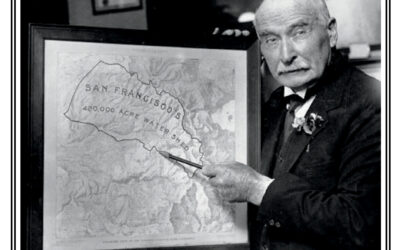Hetch Hetchy today
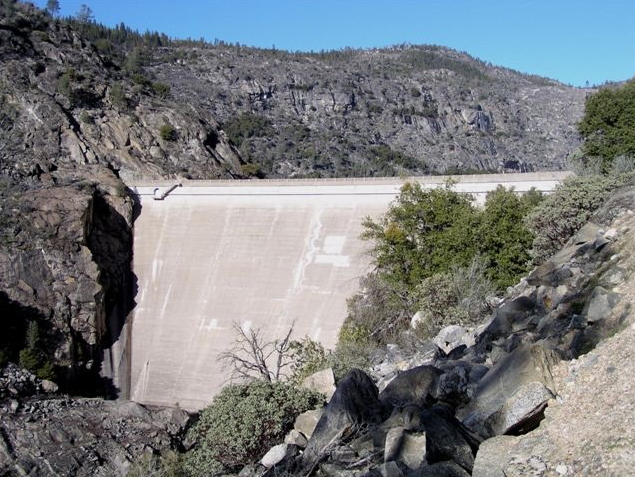
The O’Shaughnessy Dam i s 300 feet tall – only medium-sized by today’s standards. But it has flooded nine miles of a glacier-carved valley and blocks access to the Grand Canyon of the Tuolumne and other nearby areas.
Today Hetch Hetchy Valley lies buried under water behind the O’Shaughnessy Dam.
By a large measure, damming and flooding Hetch Hetchy is the most significant damage ever allowed in any of our national parks. Restore Hetch Hetchy intends to undo “this Great American mistake”, and return the valley to Yosemite National Park and all people.
Water supply
It’s essential to understand that the dispute over San Francisco’s use of Hetch Hetchy is not about the use of water – only how it is stored.
Hetch Hetchy is only one of nine reservoirs in the San Francisco Public Utility Commission’s water system. Although Hetch Hetchy Reservoir is the most well-known, it stores less than 25% of the system’s water. San Francisco’s water-bank in Don Pedro Reservoir, downstream on the Tuolumne River, holds twice as much water as Hetch Hetchy.
Restoring Hetch Hetchy will require some changes in how San Francisco moves and stores water. For most of the year it will still be possible to divert the flow of the Tuolumne River into the pipeline just downstream of the National Park boundary. During late summer and early fall, it will be necessary to move stored supplies from Cherry or Don Pedro Reservoirs into the pipeline. Only modest new supplies would be required in the driest years.
For detailed analysis of how San Francisco’s water system will operate without Hetch Hetchy reservoir, see the Environmental Defense Fund’s studies Paradise Regained and Cherry Intertie Alternative. Similar findings are described in the UC Davis study Re-Assembling Hetch Hetchy and US Bureau of Reclamation study. And more work is underway.
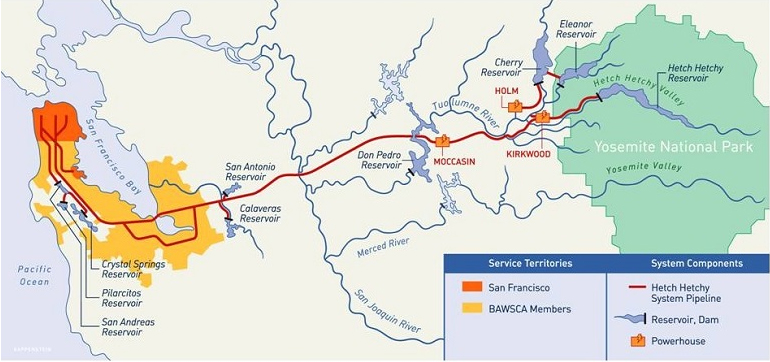
Hetch Hetchy is one of nine reserviors in a water system that serves San Francisco and other Bay Area communities. With modest additional investments San Francisco will be able to maintain an uninterrupted supply of high quality Tuolumne River water. Other California water agencies have done far more to reduce the impact of their system on Mono Lake, the Trinity and San Joaquin Rivers, and the Bay-Delta.
It’s important to note that other communities in California have taken actions in far greater magnitude than SF to make our waterways more sustainable. They have restored Mono Lake, improved stream flows on the North Coast and in the Central Valley and diminished the threat to native fish in the Bay Delta. Los Angeles, Orange County and San Jose have developed ambitious water recycling programs and have vastly improved local groundwater management. Central Valley farms have installed enough drip irrigation strips to reach the moon and back, an improvement that also enables more efficient application of fertilizer and pesticides. California’s largest water agencies, in both the urban and agricultural sectors, have invested in ambitious groundwater banking programs in Kern County.
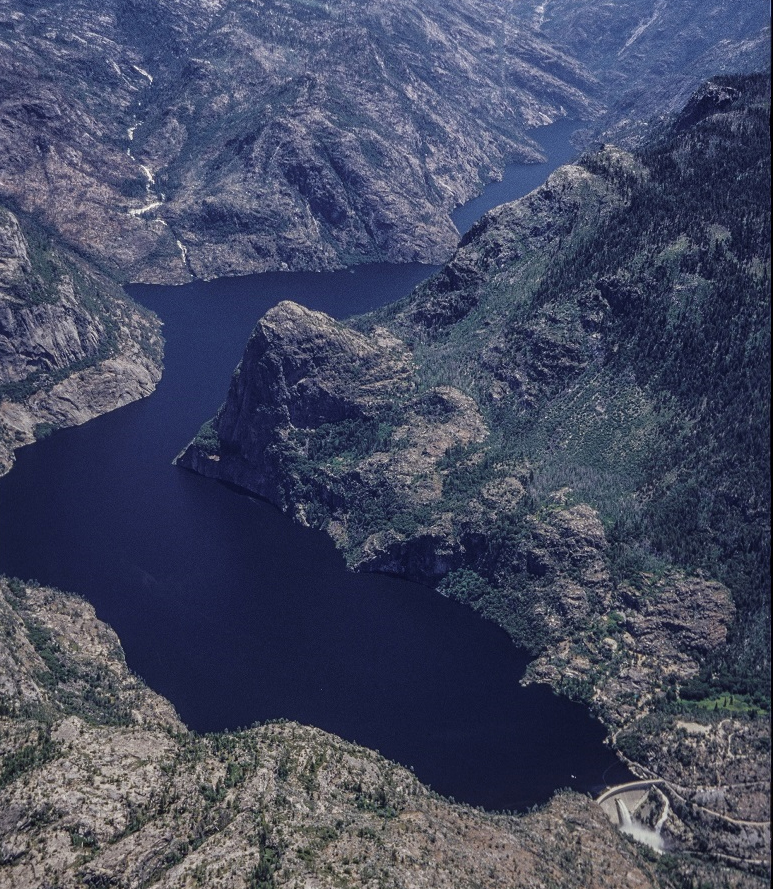
The Hetch Hetchy Valley today with the dam seen in the lower right. Copyright Barry Rokeach, 2014. All rights reserved.
Hydropower
San Francisco operates three medium-sized hydro-electric power plants in the Tuolumne River watershed – Kirkwood, Moccasin, and Holm. Restoring Hetch Hetchy Valley will allow all three power plants to remain operational but will reduce power generation at these by about 20% – an average of about 350 million kWh per year.
Generation at the Kirkwood power plant would depend on the natural flow of the Tuolumne River, and would be significantly diminished during late summer and fall. Generation at Holm powerhouse below Cherry Lake would be less affected. Much of the water passing through Holm would be diverted into the Mountain Tunnel and be used to generate power a second time at the Moccasin powerhouse.
The current power produced by the SFPUC system, although not carbon-based, is not green since it requires the continued destruction of significant habitat. It does not meet the California definition of “renewable” energy.
Restore Hetch Hetchy supports a power replacement plan that is truly renewable, and will not increase emissions of any pollutants or carbon that causes global warming. Emissions must be offset by dedicated conservation programs or renewable energy generation such as wind or solar.
Similar to the water supply issues discussed above, the amount of power replacement is small in a statewide context – less than ½ of 1% of the renewable power supply being developed this decade alone.
Our blog
Our flagship blog features analysis of news from our staff and announcements of upcoming events.
Dams & diversions and water & power
In “Eel River’s rebirth requires sacrifice”, San Francisco Chronicle reporter Kurtis Alexander reminds us that dam removals require balancing the...
Superior Court Judge rules for rivers and against water agencies
The path to restoring Hetch Hetchy will be increasingly easier as San Francisco adapts its system for a future that includes both climate change and...
Our Hetch Hetchy love triangle
The board, staff and supporters of Restore Hetch Hetchy are united by a common thread. We love Yosemite National Park – all of it, and we are...
Join us
Sign up to receive blog posts and other news by email.
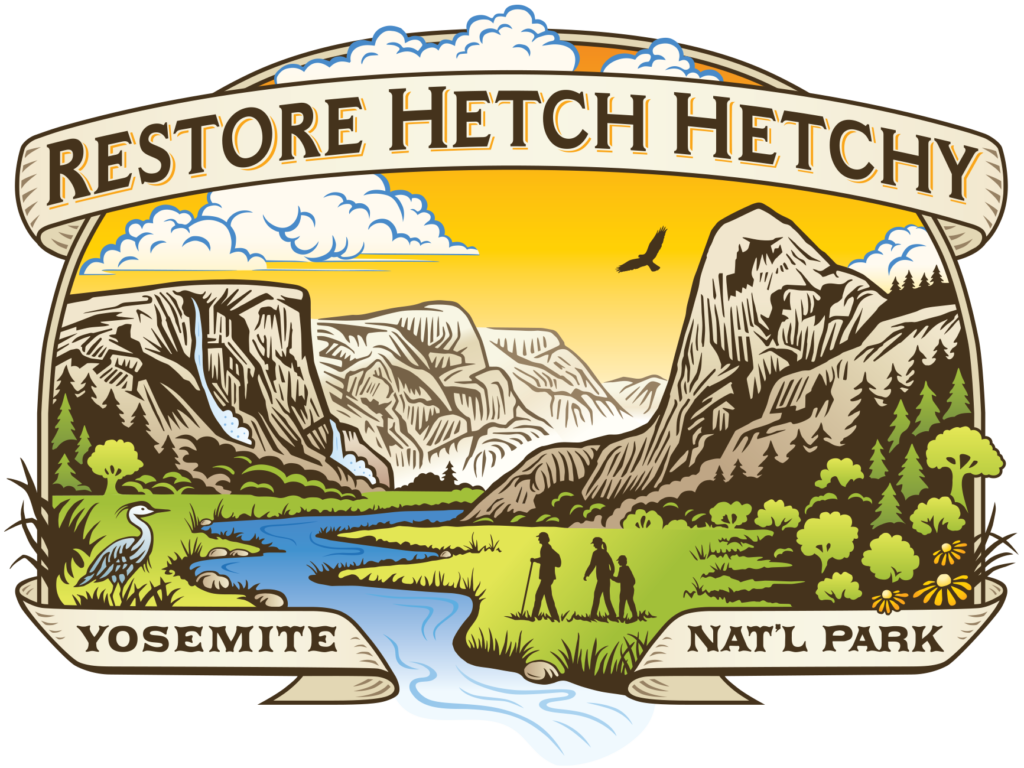
Follow us
Stay up-to-date with breaking news and upcoming events.

